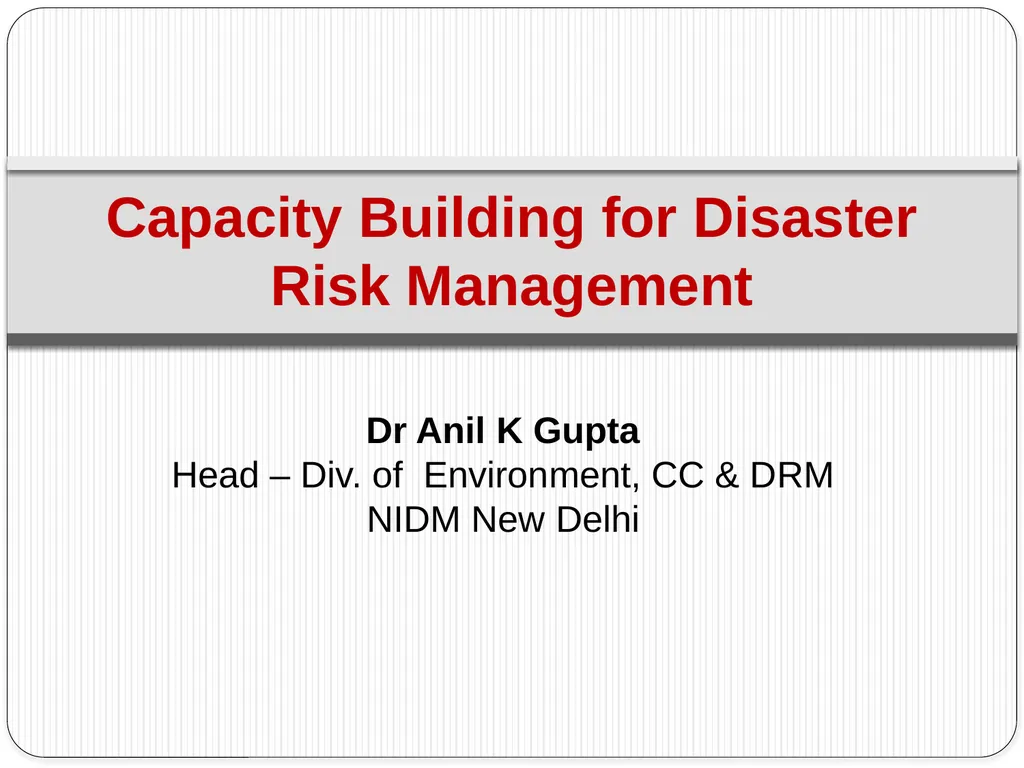
Dr Anil K Gupta Head – Div. of Environment, CC
Author: myesha-ticknor | Published: 2025-05-30
Description: Dr Anil K Gupta Head Div. of Environment, CC DRM NIDM New Delhi Capacity Building for Disaster Risk Management Disaster Management Paradigm shift from Response Relief to Mitigation and Preparedness Centric Loss of Life Reduced
Download Presentation
Download the PPT/PDF: Download
Transcript:
Loading transcript�